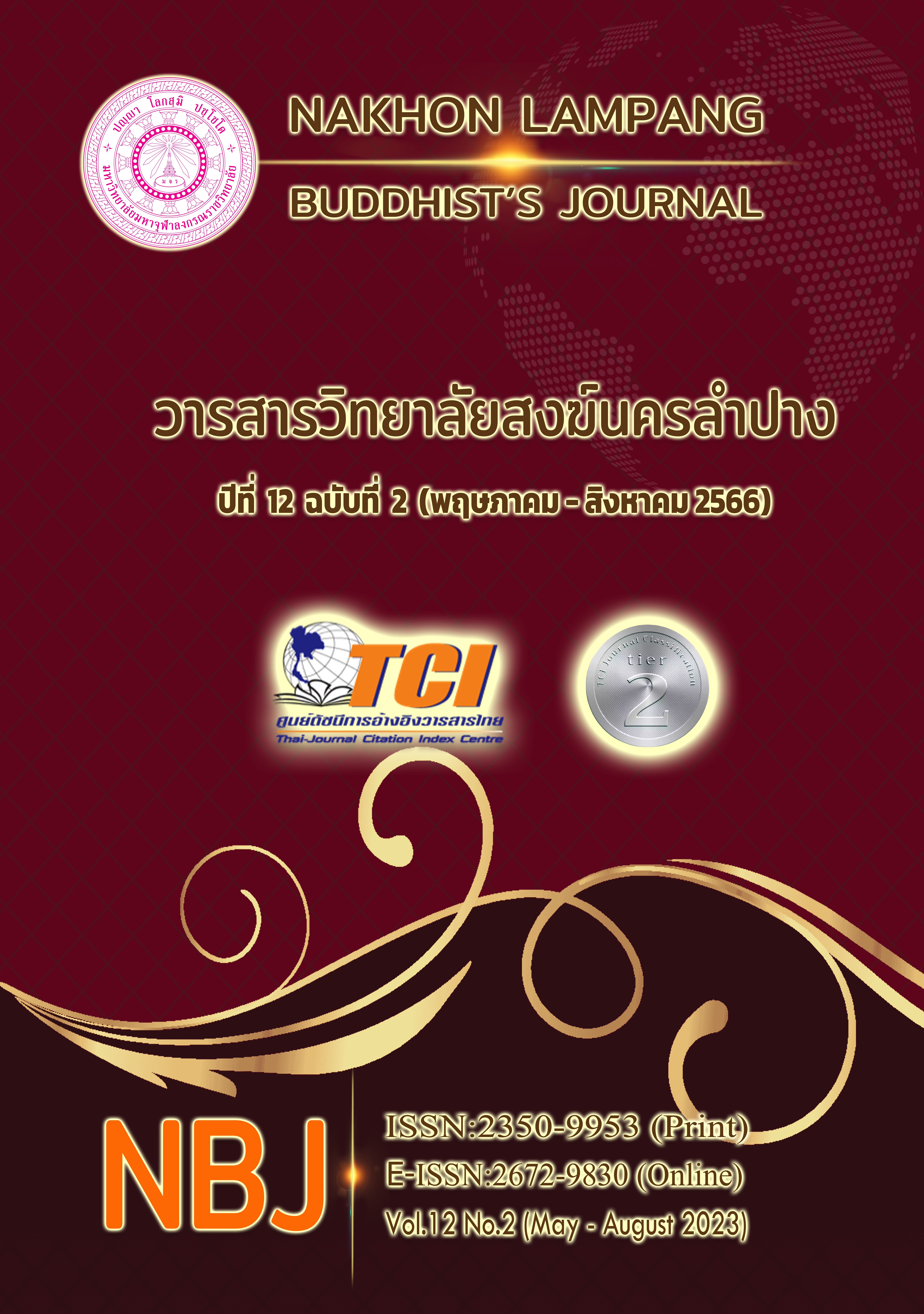ปัจจัยการใช้สื่ออิเล็กทรอนิกส์เข้าในการเรียนการสอนของมหาวิทยาลัยแห่งชาติลาวในช่วงการระบาดของไวรัสโควิด-19
Main Article Content
บทคัดย่อ
การศึกษาในครั้งนี้มีวัตถุประสงค์เพื่อศึกษาปัจจัยในการใช้สื่ออิเล็กทรอนิกส์เข้าในการเรียนการสอนของมหาวิทยาลัยแห่งชาติลาว ในช่วงที่มีการแพร่ระบาดของโรคโควิด-19 โดยเป็นการศึกษาเชิงปริมาณ โดยใช้แบบสอบถามเป็นเครื่องมือในการศึกษา กลุ่มตัวอย่างได้แก่ นักศึกษาจากสองคณะวิชา คือ คณะวิทยาศาตร์สังคมศาสตร์และคณะเศรษฐศาสตร์และบริหารธุรกิจ มหาวิทยาลัยแห่งชาติลาว จำนวน 363 คน ดำเนินการวิเคราะห์ข้อมูลด้วยโปรแกรมคอมพิวเตอร์
ผลการศึกษา พบว่า
ปัจจัยการใช้สื่ออิเล็กทรอนิกส์เข้าในการเรียน-การสอนของมหาวิทยาลัยแห่งชาติในช่วงการแพร่ระบาดของโรคโควิด-19 ในภาพรวมของทั้ง 2 คณะวิชาโดยรวมแล้วทุกปัจจัยอยู่ในระดับหลายทังสองคณะวิชา ชึ่งมีค่าเฉลี่ยอยู่ในระดับหลาย ( =3.70, S. D=0.95) ในคณะวิทยาศาตร์สังคมศาสตร์และมีค่าเฉลี่ยอยู่ในระดับหลาย ( =3.54, S D=(0.97) ในคณะเศรษฐศาสตร์และบริหารธุรกิจ ซึ่งเมื่อพิจารณาเป็นรายปัจจัยที่เรียงตามลำดับ ได้แก่ คือ ปัจจัยด้านความสามารถในการเข้าถึงการใช้สื่ออิเล็กทรอนิกส์ ปัจจัยด้านงบประมาณ ปัจจัยด้านเครื่องมือ อุปกรณ์และปัจจัยสุดท้ายได้แก่ ปัจจัยทางเทคนิคของการรับและส่งข้อมูล เพาะปัจจัยเหล่านี้ จึ่งทำให้การใช้สื่ออิเล็กทรอนิกส์เข้าในการเรียน-การสอนของมหาวิทยาลัยแห่งชาติลาว ในช่วงที่มีการแพร่ระบาดของโรคโควิด-19 ขาดประสิทธิภาพและประสิทธิผลในบางวิชาและนักเรียนบางกลุ่มโดยเฉพาะนักเรียนที่อาศัยอยู่ในพื้นที่ห่างไกลและชนนบท ไม่สามารถเข้าถึงการใช้สื่ออิเล็กทรอนิกส์เข้าในการเรียนการสอนได้ จึ่งทำให้ในปีการศึกษาที่ผ่านมามีนักเรียนออกกลางคันจำนวนมากกว่าปีที่ผ่านมา
Article Details

อนุญาตภายใต้เงื่อนไข Creative Commons Attribution-NonCommercial-NoDerivatives 4.0 International License.
เอกสารอ้างอิง
Intharo, T. et al. (2022). The Role of Community Leaders in Managing the 2019 Coronavirus Pandemic: Case study, Ban Tha Sa-torn, Tung Mo Sub-district, Sadao District, Songkhla Province. Journal of Peace Periscope. 3(1), 30-46.
Jaiphet, C., Rungsee,P., & Pharcharuen, W. (2022). Political Participation in Democracy of Undergraduate Students,Maejo University,
academic year 2020. Journal of Social Sciences and Modern Integrated Sciences. 3(2), 29-42.
Jiawang & Zhifeng Wang. (2020). Department of Health Policy and Management, Peking University School of Public Health. China : Beijing 100191.
Khetjoi, S. et al. (2023). Social Science Students Moral Suppport and Motivationin Studying in Covid 19 Situation Pandemic, Mahamakut Buddhist University Isan Campus. Nakhon Lampang Buddhist’s Journal, 12 (1), 52-67.
National University of Laos (2021). National University of Laos. Retrieved January 8, 2022, from
http://tunjai.com/sumfile/index.php?uid=1&pid=6&menutype=rboard&qid=30&qid2=&swidth=.
National University of Laos. (2021). Vision 2030, Education Development Strategy 2016-2025 and Development Plan (2016-2020) of the National University of Laos. Vientiane Capital : National University of Laos.
Puangkum, P. & Charoentrakulpeeti, W. (2022). Grill buffet at the situation of COVID-19 affecting the adjustment of consumers and buffet restaurant business in Mueang Chiang Mai District,Chiang Mai Province. Journal of Social Sciences and Modern Integrated Sciences. 3 (1), 22-31.
Saengsuwan, P. et al. (2022). The Role of Community Leaders in Response to the COVID-19 Pandemic Case Study, Tungkangok Subdistrict, Mueang District, Phang Nga Province. Journal of Social Sciences and Modern Integrated Sciences. 3 (2), 13-28.
World Health Organization. (2009). Dengue: guidelines for diagnosis, treatment, prevention and control. New ed. Geneva : WHO.
Yamane, T. (1973). Statistics: an introductory analysis. New York: New York: Harper & Row.

